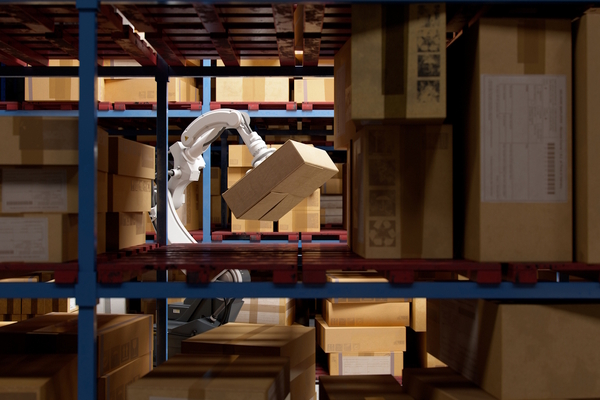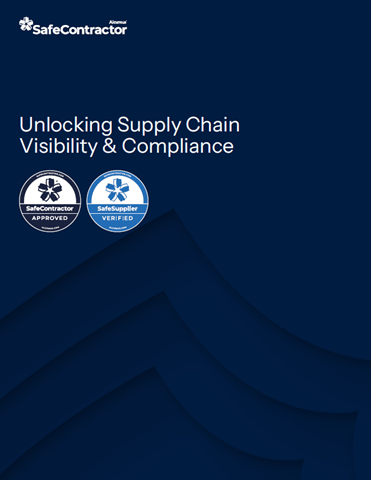Managing a sustainable supply chain with real-time insights
Sponsored by Samsara
The past 18 months have done away with ‘just-in-time’ delivery, where shippers could plan loads weeks in advance and manufacturers could schedule multiple shipments to arrive on the same day. Instead, supply chains have been stretched to breaking point as businesses around the world try to keep things running while navigating material scarcity, shipping delays and labour shortages.
With these disruptions, though, many companies are learning how to be more nimble and rely on measured data rather than previously agreed-upon plans. As operational systems rebound from the challenges of Covid-19, empowered by this new ability to use real-time, measured data, there’s a tremendous opportunity to restore our supply chains to be not only more resilient but also more efficient and sustainable.
Efficiency has long been a goal of well-run operations, but sustainability is a newer goal for the world’s logistics managers. Product shortages and fluctuating fuel prices have long been a burden on our global supply chain, but when you add in climate-related challenges such as power outages in Texas or flash-flooding in New York, you get even more uncertainty. Logistics operators are under increasing pressure to not just work around the effects but also to address the root causes of climate change. In fact, according to a recent survey from Samsara and Wakefield Research, 91 per cent of fleet and operations professionals feel significant pressure is being put on their organisation to set and meet aggressive sustainability goals.
In addition to behaving more sustainably, supply chain operators are finding they increasingly need real-time data to report and measure their environmental footprint. Going into this year’s COP26 UN Climate Change Conference, we saw NGOs such as the Centre for Economic Policy Research calling for mandatory carbon disclosures for both public and private companies. The US Securities and Exchange Commission is working on rules that will require disclosures from public companies on their carbon emissions and operations risks from climate change. These disclosure and reporting requirements are pushing more companies to not just adopt tools to measure and report on their activities but also to require their upstream suppliers and vendors to ensure sustainability is considered as a core part of their operations.
Between changes in their operations and improvements in reporting, logistics companies are on the frontlines of tackling the problem of reducing emissions. The UN warns that unless global greenhouse gas emissions fall by 7.6 per cent each year between 2020 and 2030, the world will miss the opportunity to get on track towards the 1.5°C temperature goal of the Paris Agreement. With operations making up 60 per cent of the energy consumed in the US, our ability to bring this down even slightly with the use of real-time data, increased visibility and digitisation can have a significant environmental impact.
The growth and impact of sustainable transportation
Our customers run complex supply chains and they don’t look at sustainability in a silo, but rather as a piece of the larger connected operations puzzle. When real-time data collected from a company’s assets and equipment are combined with automation and smart analysis to help identify waste and inefficiencies, sustainability becomes an integrated part of how they operate.
As more companies look to align themselves with the UN’s Sustainable Development Goals, leaders want to see measurable sustainability benefits from purchasing technology solutions. You can’t improve what you can’t measure – which is why real-time data and visibility into sustainability metrics across the supply chain have become so critical. In the same survey from Samsara and Wakefield Research, 47 per cent of respondents said real-time data on their physical operations would make it easier to meet emissions targets.
The good news is that making significant improvements won’t require reinventing entire systems. Incremental changes in things such as driving behaviour to reduce harsh acceleration and braking or using digital documents to reduce the use of paper logs can make a difference. For example, Dohrn Transfer Company used insights from Samsara to increase fuel efficiency and save about 150,000 gallons of fuel, or over $500,000, per year.
Electrifying commercial transportation
While saving fuel is good, long term we will need to move away from non-renewable fuels. Logistics and transportation companies have the potential to significantly decrease global emissions if vehicles are electrified. In fact, the transportation industry makes up 29 per cent of greenhouse gas emissions, the largest share of any economic sector. Even switching to hybrid vehicles would make a meaningful difference, and fleets are adopting new technologies quickly. Samsara has already seen customers drive more than 160 million cumulative hybrid and electric miles in the past three years.
That said, the shift to a sustainable supply chain through the use of electric vehicles comes with new infrastructure challenges. While it takes minutes to fill the tank of a fuel-based vehicle, it may take hours to recharge an EV. But companies are creating fast-charging networks for electric vehicles, so drivers can recharge quickly during a mandated break. At the same time, large logistics depots are putting in charging stations that will top up a vehicle overnight, so it’s fully charged and ready in the morning.
For longer hauls, range anxiety will still be an issue at first, especially as heavier trucks transition to electric. One way to counter range anxiety is with advanced monitoring software that tracks each vehicle’s state of charge, plans ahead to ensure the truck can finish its route each day and monitors vehicles for unexpected low-battery situations so dispatchers can reroute a vehicle to a charger or back to base.
This electrification shift is starting to go mainstream with well-known companies deploying electric delivery trucks and whole cities – like Boston – electrifying their municipal fleets.
Real-time intelligence and resilience
This past year, we’ve seen more commercial transportation companies embrace sophisticated connected operations software that can help reduce fuel costs, provide new real-time flexibility and help them shift to more sustainable vehicles, such as EVs. This is a movement we anticipate will continue well into 2022 and beyond.
With many legacy systems running on 3G wireless networks that are slated to be shut down, we should see an even stronger push to newer, modern connected operations technologies in the coming year. An additional challenge with these older systems is that they lack true real-time visibility – data may refresh every few minutes or every hour, rather than every few seconds. For today’s supply chain, real-time visibility means resiliency. With better intelligence on where vehicles are located or how truckers are driving, we not only save fuel and time, but we can also respond intelligently to shipping delays or unexpected challenges. Of course, there will always be last-minute changes to supply chains that cause ripples of inefficiency to slow down operations. While the best shippers plan for as many scenarios as they can, the more real-time data they have, the better they can manage the realities of this uncertain industry.
When we look back at 2020 and 2021, we’re going to see a lot of lessons learned about creating more resilient and sustainable supply chains. We’ve seen challenges in tracking shipments, coordinating deliveries and getting products from one place to the other. But we’re also seeing an intelligent software revolution in how transportation is managed – a revolution that will make a big difference for our environment. Businesses, consumers and regulators alike all want to make supply chains more sustainable. Samsara’s greatest impact will come from continued innovation to build technology solutions that help our customers to meet these goals.
by Alexander Stevenson, Vice President Product Management, Samsara

Business Reporter Team
Most Viewed
23-29 Hendon Lane, London, N3 1RT
23-29 Hendon Lane, London, N3 1RT
020 8349 4363
© 2024, Lyonsdown Limited. Business Reporter® is a registered trademark of Lyonsdown Ltd. VAT registration number: 830519543




